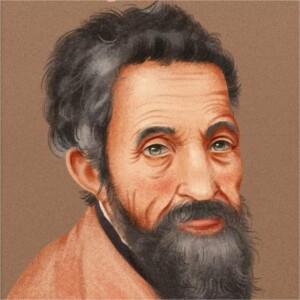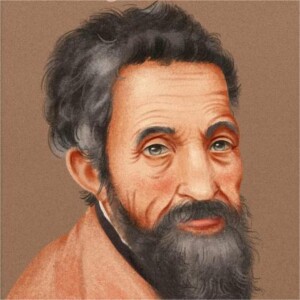Centro de libros de autoayuda
¡Hola a todos y bienvenidos al podcast! Aquí, donde la sabiduría se condensa en dosis concentradas, nos sumergimos en el fascinante mundo de los resúmenes de no ficción. Cada semana, exploramos los temas más relevantes e intrigantes del mundo actual, desde ciencia y tecnología hasta negocios y filosofía. ¿Te falta tiempo para leer esos largos libros que llevan meses en tu lista de pendientes? ¡No te preocupes! Nuestro equipo de expertos hace el trabajo por ti, destilando las ideas clave y enseñanzas cruciales en resúmenes breves y accesibles. Acompáñanos en este viaje de conocimiento, inspiración y crecimiento personal mientras desentrañamos juntos la esencia de lo mejor de la no ficción. ¡Empecemos! Website: https://bookeygetbooks.wixsite.com/bookeyes
Episodes

Sunday May 12, 2024
Sunday May 12, 2024
How does Newport address the idea of "mission" and finding meaningful work?
Newport addresses the idea of "mission" and finding meaningful work through his concept of "career capital." He argues that instead of focusing on finding a job that aligns with one's passion or purpose, individuals should focus on developing rare and valuable skills that can be leveraged to create a meaningful and fulfilling career. By investing in building expertise and proficiency in a particular field, individuals can increase their value in the marketplace and have more control over their career trajectory. Newport also emphasizes the importance of deliberate practice and continuous learning in order to cultivate career capital and find work that is both satisfying and financially rewarding. Ultimately, Newport's message is that finding meaningful work is not about following one's passion, but about building the skills and abilities that enable one to create a fulfilling career.
What role does autonomy play in finding valuable and fulfilling work?
Autonomy plays a crucial role in finding valuable and fulfilling work. When individuals have autonomy in their work, they have the freedom to make decisions, set their own goals, and work in a way that aligns with their values and interests. This sense of independence and control can lead to increased job satisfaction, motivation, and engagement.
Having autonomy in the workplace allows individuals to use their unique skills and talents to contribute to their work in a meaningful way. It also helps foster a sense of ownership and responsibility, leading to a greater sense of fulfillment and accomplishment.
In addition, autonomy can also lead to increased creativity and innovation, as individuals are empowered to think outside the box and explore new ideas without feeling constrained by rigid structures and rules. This can result in more fulfilling work experiences and opportunities for growth and development.
Overall, autonomy is an important factor in finding valuable and fulfilling work, as it allows individuals to have a sense of control over their work and shape their careers in a way that is meaningful to them.
How does Newport address the concept of "control traps" and navigating career decisions?
Newport addresses the concept of "control traps" and navigating career decisions by emphasizing the importance of prioritizing deliberate practice and skill-building over seeking immediate comfort and control in one's career. He argues that many individuals fall into the trap of pursuing jobs that offer a false sense of security and control, rather than actively seeking out opportunities for growth and learning.
Newport suggests that individuals should focus on developing valuable skills and expertise that will make them indispensable in their field, rather than simply seeking out positions that offer a sense of stability. By continually pushing oneself outside of their comfort zone and taking on new challenges, individuals can navigate their career path in a way that leads to long-term success and fulfillment.
In essence, Newport encourages individuals to have a growth mindset and embrace uncertainty in their career decisions, rather than succumbing to the temptation of control traps that may limit their potential for growth and advancement. By taking calculated risks and prioritizing skill development, individuals can make strategic career choices that align with their long-term goals and aspirations.

Saturday May 11, 2024
Saturday May 11, 2024
How does The Millionaire Fastlane approach the idea of passive income?
The Millionaire Fastlane by MJ DeMarco approaches the idea of passive income as a means to achieving financial freedom and building wealth quickly. DeMarco argues that traditional ideas of saving and investing for retirement will not lead to true wealth or financial independence. Instead, he promotes creating systems and businesses that generate passive income streams so that individuals can break free from the constraints of traditional employment and build wealth at a faster pace. DeMarco emphasizes the importance of creating scalable and automated income streams that can continue to generate passive income over time.
How does DeMarco's personal background and experiences inform the advice he gives in the book?
DeMarco's personal background and experiences play a significant role in informing the advice he gives in the book. As a successful entrepreneur and business owner himself, DeMarco draws from his own firsthand experiences and the challenges he faced in building his own businesses. This allows him to provide practical, real-world advice that is rooted in his own journey and successes.
Additionally, DeMarco's background in finance and investing gives him a unique perspective on wealth-building and financial independence, which is evident in the strategies and principles he shares in the book. His experiences in the business world also inform his advice on entrepreneurship, leadership, and decision-making, offering readers valuable insights and guidance based on his own lessons learned.
Overall, DeMarco's personal background and experiences serve as a strong foundation for the advice he gives in the book, making it relatable and actionable for readers looking to achieve their own financial goals and entrepreneurial dreams.
How does The Millionaire Fastlane address the concept of "get-rich-quick" schemes?
"The Millionaire Fastlane" by MJ DeMarco addresses the concept of "get-rich-quick" schemes by distinguishing between a "fastlane" and a "sidewalk" mentality. DeMarco argues that "get-rich-quick" schemes are often based on luck or short-term gains, whereas true wealth and success come from creating value, taking calculated risks, and working hard towards long-term goals. He emphasizes the importance of building a successful business or investing wisely to achieve financial freedom, rather than falling for quick fixes or easy money scams. DeMarco encourages readers to shift their mindset from seeking instant gratification to focusing on building sustainable wealth through diligent effort and strategic decision-making.

Friday May 10, 2024
Friday May 10, 2024
How do you determine what type of work you find fulfilling and meaningful?
Determining what type of work is fulfilling and meaningful can vary greatly from person to person. However, some common ways to figure it out include:
Consider your values and interests: Think about what is important to you and what you enjoy doing. Identify your passions and what motivates you.
Reflect on past experiences: Consider times when you felt truly fulfilled and happy in your work. What were you doing at that time? What aspects of the work brought you joy?
Take personality and strengths assessments: Utilize tools like the Myers-Briggs Type Indicator or StrengthsFinder to better understand your personality traits and strengths. This can help guide you towards work that aligns with your natural tendencies.
Seek feedback from others: Ask friends, family, and colleagues for their perspective on what they think you excel at and where they see you thriving.
Experiment with different opportunities: Try out new experiences, internships, or projects to see what resonates with you. This can help you narrow down what type of work you find fulfilling.
Ultimately, finding work that is both fulfilling and meaningful often involves a combination of self-reflection, exploration, and seeking input from others. Trust your instincts and pay attention to what truly brings you satisfaction and joy in your work.
How can you apply the concept of "career capital" to your current job or career path?
You can apply the concept of career capital to your current job or career path by actively seeking out opportunities to develop and enhance your skills, knowledge, and experiences. This can include taking on new projects, seeking out opportunities for professional development and training, building your network, volunteering for leadership roles, and seeking out mentors and sponsors who can provide guidance and support.
By continually building and investing in your career capital, you can increase your value and relevance in your current role or field, as well as set yourself up for future career opportunities and advancements. Additionally, having a strong foundation of career capital can help you navigate changes and challenges in your career path, and allow you to adapt and grow in response to new opportunities and demands.
What are some ways you can leverage your existing skills and experiences to create new opportunities in your career?
Identify transferrable skills: Take stock of the skills you have developed in your current or previous roles and think about how they can be applied to different industries or positions.
Seek professional development opportunities: Consider taking courses, attending workshops, or pursuing certifications to enhance your existing skills and make yourself a more attractive candidate for new opportunities.
Network with professionals in different industries: Connect with people in your network who work in industries or roles that interest you. They may be able to provide advice, guidance, or even job leads based on your existing skills and experiences.
Update your resume and online presence: Make sure your resume and LinkedIn profile highlight the skills and experiences that are most relevant to the types of opportunities you are seeking. Tailor your resume to each job application to better showcase how your existing skills align with the job requirements.
Be open to new challenges: Be willing to step out of your comfort zone and take on new challenges that may push you to develop new skills or experiences. This can help you expand your skill set and open up new opportunities in your career.
Volunteer or freelance: Consider volunteering for projects or freelancing in your spare time to gain experience in new areas or industries. This can help you build new skills and demonstrate your ability to adapt and learn quickly.
Stay informed about industry trends: Keep up-to-date with trends, technologies, and developments in your field and in related industries. Having a good understanding of where the industry is headed can help you identify new opportunities for growth and advancement.

Thursday May 09, 2024
Thursday May 09, 2024
What role does mindset play in achieving financial success according to the book?
In the book, mindset plays a pivotal role in achieving financial success. The author emphasizes that having a positive and growth-oriented mindset is crucial in overcoming challenges, taking risks, and seizing opportunities in order to improve one's financial situation. A mindset focused on abundance, resilience, and continuous learning can empower individuals to make wise financial decisions, overcome setbacks, and adapt to changes in the financial landscape. By adopting a mindset of success, individuals are more likely to set and achieve their financial goals, build wealth, and create a secure financial future for themselves and their families.
How does DeMarco challenge conventional wisdom about the concept of retirement?
DeMarco challenges conventional wisdom about the concept of retirement by advocating for individuals to pursue personal fulfillment and continue working beyond traditional retirement age. He believes that retirement should not be a fixed endpoint but rather a flexible and evolving phase of life where individuals can engage in meaningful work and contribute to society. DeMarco advocates for redefining retirement as a time for personal growth, exploration, and contribution, rather than simply as a period of relaxation and withdrawal from the workforce. By challenging the notion that retirement must follow a specific timeline and involve complete withdrawal from work, DeMarco encourages individuals to continue pursuing their passions and staying active in their later years.
DeMarco emphasizes the importance of creating value for others. How can individuals apply this principle in their own lives and businesses?
Identify the needs and desires of others: In order to create value for others, individuals must first understand what they need and want. This requires actively listening to others, conducting market research, and engaging in dialogue to understand the specific challenges and desires of their target audience.
Solve problems: Once individuals have identified the needs and desires of others, they can then work on providing solutions. This could involve developing innovative products or services that address a specific pain point, offering exceptional customer service, or implementing new processes that improve efficiency and effectiveness.
Focus on quality: Creating value for others requires a commitment to excellence. By focusing on quality in all aspects of their work, individuals can build trust and credibility with their customers and clients, which in turn will lead to long-term success and loyalty.
Build relationships: Building strong relationships with customers, clients, and partners is essential for creating value for others. By listening to their feedback, addressing their concerns, and communicating openly and honestly, individuals can build trust and loyalty that will ultimately lead to long-term success.
Continuously innovate: Creating value for others also requires a willingness to adapt and change in response to shifting market conditions and evolving customer preferences. By continuously innovating and seeking new ways to improve their products, services, and processes, individuals can stay ahead of the competition and continue to provide value for their customers.

Thursday May 02, 2024
Thursday May 02, 2024
How does the novel portray Michelangelo's struggles with self-doubt and insecurity as an artist?
In the novel, Michelangelo's struggles with self-doubt and insecurity are portrayed through his internal monologues and interactions with other characters. He constantly questions his talent and whether he is truly capable of producing great art. His insecurities are compounded by the pressure from his patrons and the competitive nature of the art world during that time period.
Additionally, Michelangelo's relationships with other artists, such as Leonardo da Vinci, highlight his feelings of inadequacy and fear of failure. He compares himself to these more established artists and feels that he can never measure up to their talent and success.
Overall, the novel portrays Michelangelo as a complex artist who grapples with his own doubts and insecurities, despite his undeniable talent and passion for his work. His struggles with self-doubt further humanize him and make him a more relatable and sympathetic character to the reader.
How does the novel depict Michelangelo's relationship with the powerful figures of his time, such as Pope Julius II?
In the novel, Michelangelo's relationship with powerful figures such as Pope Julius II is depicted as complex and often strained. While he is initially commissioned by the Pope to create some of his most famous works, such as the Sistine Chapel ceiling and the tomb of Julius II, their relationship is fraught with tension and conflicting interests. The Pope is portrayed as a demanding and difficult patron, constantly pushing Michelangelo to work faster and meet his high standards. Despite this, Michelangelo is shown as fiercely independent and unwilling to compromise his artistic vision, leading to clashes with the Pope and other powerful figures. Ultimately, the novel portrays Michelangelo as a brilliant artist who is willing to risk his reputation and livelihood in order to create timeless works of art.
How does the novel address the themes of faith, spirituality, and humanism in Michelangelo's work?
The novel addresses the themes of faith, spirituality, and humanism in Michelangelo's work by exploring how these elements played a significant role in the artist's life and work. The novel may delve into Michelangelo's deep religious beliefs and how they manifest in his art, such as in his iconic works like the Sistine Chapel ceiling and the Pietà.
Additionally, the novel may also examine how Michelangelo's humanistic principles influenced his artistic choices and the themes he explored in his work. Humanism, which emphasized the importance of the individual and the potential for human greatness, can be seen in Michelangelo's representations of the human body and the emotions and struggles of his subjects.
Overall, the novel may portray Michelangelo as a complex and multifaceted artist who grappled with questions of faith, spirituality, and the human experience in his art, ultimately creating timeless works that continue to resonate with audiences today.

Wednesday May 01, 2024
Wednesday May 01, 2024
What role do schools and communities play in promoting outdoor play and exploration for children, as emphasized in the book?
Schools and communities play a vital role in promoting outdoor play and exploration for children by providing safe and accessible outdoor spaces for them to engage in active play. By creating opportunities for children to explore nature, schools and communities can help children develop a love for the outdoors and foster a sense of appreciation for the natural world. Additionally, schools and communities can facilitate outdoor play by organizing outdoor activities, such as hikes, nature walks, and gardening projects, that encourage children to be physically active and connect with the natural environment. Through these efforts, schools and communities can help children develop important skills, such as problem-solving, critical thinking, and creativity, while also promoting physical health and well-being.
How does the disconnect from nature impact children's creativity and problem-solving skills, as outlined in Last Child In The Woods?
In "Last Child in the Woods," author Richard Louv argues that the disconnect from nature can have a negative impact on children's creativity and problem-solving skills. Louv suggests that spending time outdoors, exploring nature, and engaging in unstructured play in natural settings are important for stimulating creativity and developing problem-solving skills in children.
When children spend less time in nature and more time indoors or in structured activities, they may have limited opportunities to explore, discover, and experiment in the natural world. This can restrict their imagination and creativity, as well as hinder their ability to think critically and solve problems. Nature provides a rich and diverse environment for children to explore, learn, and challenge themselves, which can help them develop important cognitive skills and foster a sense of curiosity and wonder.
Furthermore, spending time in nature has been linked to reduced stress, improved focus and attention, and enhanced mental health - all of which are important factors in nurturing creativity and problem-solving abilities. In contrast, a lack of exposure to nature can contribute to feelings of anxiety, depression, and ADHD, which can also inhibit a child's ability to think creatively and solve problems effectively.
Overall, the disconnect from nature can have a detrimental impact on children's creativity and problem-solving skills by limiting their exposure to diverse experiences, opportunities for exploration, and opportunities for self-directed learning. Louv argues that it is important for children to have regular and meaningful interactions with nature in order to foster their creative and problem-solving abilities.
Are there cultural or socioeconomic barriers that prevent some children from experiencing nature, as discussed in the book?
Yes, in "Last Child in the Woods" by Richard Louv, the author discusses how cultural and socioeconomic barriers can prevent children from experiencing nature. These barriers include factors such as limited access to green spaces or parks, safety concerns in urban areas, and a lack of resources or time for outdoor activities. Additionally, cultural norms or attitudes towards nature may differ among different communities, impacting a child's exposure to the natural world. Louv argues that addressing these barriers is crucial for promoting a healthier and more connected relationship between children and nature.

Tuesday Apr 30, 2024
Tuesday Apr 30, 2024
What message or lesson does The Agony And The Ecstasy convey about the nature of artistic genius and the pursuit of perfection?
"The Agony and the Ecstasy" by Irving Stone tells the story of Michelangelo, emphasizing the struggles and sacrifices that come with pursuing artistic genius and perfection. The novel conveys the message that true artistic genius requires relentless dedication, hard work, and a willingness to overcome obstacles and face challenges. It also highlights the emotional and mental toll that the pursuit of perfection can take on an artist, as seen in Michelangelo's struggles with self-doubt, perfectionism, and the pressure to create masterpieces that live up to his own standards and the expectations of society.
Overall, the novel suggests that artistic genius and the pursuit of perfection are not easy paths to follow, but require immense passion, commitment, and perseverance. It also emphasizes the importance of pushing boundaries, taking risks, and continuously striving to improve and evolve as an artist in order to truly reach one's full potential.
How does the novel portray the complex relationship between Michelangelo and Pope Julius II?
In the novel, the complex relationship between Michelangelo and Pope Julius II is portrayed as one of both admiration and conflict. The Pope recognizes Michelangelo's talent and genius as an artist, and is eager to have him work on important projects such as the Sistine Chapel ceiling. However, their relationship is also fraught with tension and power struggles, as the Pope is a demanding and controlling figure who often overrides Michelangelo's artistic vision and insists on specific changes to his work. This pushing and pulling between the two characters creates a dynamic and complex relationship that adds depth to the story and showcases the challenges of creating art under the patronage of a powerful figure.
What role does the city of Florence play in the novel and how does it influence Michelangelo's career and artistic development?
The city of Florence plays a significant role in the novel as it serves as the backdrop for much of Michelangelo's early life and artistic development. Florence was a vibrant center of artistic and cultural activity during the Renaissance, and Michelangelo was exposed to a wide array of artistic influences and opportunities there.
The city's rich artistic tradition and competitive atmosphere pushed Michelangelo to constantly strive for excellence and to distinguish himself as a unique talent. Florence also provided Michelangelo with opportunities to work alongside and learn from other renowned artists, such as Leonardo da Vinci and Sandro Botticelli, further shaping his artistic style and techniques.
Additionally, the political and social climate of Florence had a direct impact on Michelangelo's career. The city's powerful Medici family and various other influential patrons provided Michelangelo with commissions for his work, helping him to establish himself as a successful and in-demand artist.
Overall, Florence's artistic community, competitive environment, and wealth of opportunities heavily influenced Michelangelo's career and artistic development, shaping him into the celebrated artist that he became.

Monday Apr 29, 2024
Monday Apr 29, 2024
How can parents and caregivers balance concerns about safety with the benefits of outdoor play and exploration?
Parents and caregivers can balance concerns about safety with the benefits of outdoor play and exploration by taking the following steps:
Establish clear guidelines and boundaries for outdoor play. This could include setting specific areas where children are allowed to play, teaching them about potential hazards and risks, and instructing them on how to stay safe while exploring outside.
Supervise children while they are playing outdoors. Keeping a close eye on them can help prevent accidents and injuries. It's important for adults to be present to intervene in case of an emergency.
Encourage children to participate in outdoor activities that are age-appropriate and suitable for their skill level. This can help reduce the likelihood of accidents or injuries while still allowing them to enjoy the many benefits of being outside.
Teach children about the importance of safety precautions, such as wearing helmets while riding bikes, looking both ways before crossing the street, and staying away from potentially dangerous areas.
Stay informed about potential risks in the area where children will be playing. This could include knowing about potentially hazardous plants, animals, or environmental factors that could pose a danger to children.
Balance safety concerns with the benefits of outdoor play by allowing children the freedom to explore and learn in nature while still maintaining necessary precautions for their well-being.
By following these steps, parents and caregivers can ensure that children are able to enjoy the benefits of outdoor play and exploration while also staying safe and protected from potential dangers.
What role can schools and communities play in promoting nature-based education and experiences for children?
Schools and communities can play a vital role in promoting nature-based education and experiences for children by:
Incorporating nature-based curriculum into the school curriculum, such as science classes, outdoor education programs, and gardening projects.
Organizing field trips to natural areas, parks, and conservation areas to allow children to experience and learn about the natural world first-hand.
Creating outdoor learning spaces on school grounds, such as gardens, nature trails, and outdoor classrooms, where children can connect with nature and engage in experiential learning.
Partnering with local environmental organizations and experts to provide resources, training, and support for nature-based education initiatives.
Hosting community events, such as nature walks, nature festivals, and wildlife watching tours, to promote environmental awareness and appreciation among children and their families.
Encouraging and facilitating outdoor play and recreation, such as hiking, biking, and camping, to help children develop a love of nature and a sense of stewardship for the environment.
Engaging in eco-friendly practices, such as recycling, composting, and conserving energy, to teach children the importance of sustainability and environmental responsibility.
By working together, schools and communities can create a culture of environmental consciousness and instill in children a lifelong love and respect for nature.
How does Louv suggest that children's exposure to nature can help them develop empathy, creativity, and problem-solving skills?
Louv suggests that children's exposure to nature can help them develop empathy by fostering a sense of connection to other living beings and an understanding of the interdependence of all living things. When children spend time in nature, they are more likely to observe and appreciate the diverse needs and behaviors of plants, animals, and ecosystems, which can help them cultivate a sense of empathy and compassion.
In terms of creativity, Louv argues that nature provides children with a rich sensory experience that stimulates the imagination and encourages creative thinking. Nature is full of patterns, colors, textures, and sounds that can inspire children to experiment, explore, and create in new and innovative ways. By engaging with the natural world, children can develop their imagination, curiosity, and problem-solving skills.
Additionally, Louv suggests that children's exposure to nature can help them develop problem-solving skills by providing them with opportunities to navigate challenges, make decisions, and adapt to changing environments. When children spend time in nature, they are exposed to a variety of stimuli and situations that require them to think critically, strategize, and collaborate with others. By engaging with the natural world, children can hone their problem-solving skills and build resilience in the face of adversity.

Thursday Apr 25, 2024
Thursday Apr 25, 2024
How might Wade's research influence public policy and discussions around race, genetics, and identity?
Wade's research may influence public policy and discussions around race, genetics, and identity by sparking debate and raising awareness about the complexities of these issues. His findings may prompt policymakers to consider the implications of genetic research on concepts of race and identity, and encourage more nuanced discussions about the interaction between genetics and social factors in shaping individuals' identities. Additionally, Wade's research may also highlight the importance of taking a multidisciplinary approach to understanding race and genetics, and emphasize the need for policies that promote equality, justice, and inclusivity in the face of genetic information. Overall, Wade's research has the potential to contribute to a more informed and thoughtful public discourse around these complex and sensitive issues.
In what ways does A Troublesome Inheritance contribute to ongoing debates about nature versus nurture?
A Troublesome Inheritance by Nicholas Wade argues that human characteristics, such as intelligence, behavior, and social organization, are a result of both genetic inheritance and cultural evolution. Wade suggests that genetics play a significant role in shaping human nature, but also acknowledges the influence of culture and environment.
This contribution to the nature versus nurture debate is significant because it challenges traditional views that favor one side over the other. Wade argues that both genetics and cultural evolution are important factors in shaping human behavior, and that they interact in complex ways to create the diversity of human societies.
By presenting evidence from genetics, anthropology, and history, A Troublesome Inheritance adds to the ongoing debate by suggesting that both nature and nurture are equally important in understanding human nature. This nuanced perspective prompts readers to reconsider simplistic dichotomies and appreciate the complexity of human behavior and society.
What do historians, anthropologists, and geneticists think of Wade's conclusions in A Troublesome Inheritance?
Historians, anthropologists, and geneticists have generally criticized Wade's conclusions in A Troublesome Inheritance as being oversimplified and relying heavily on outdated or discredited scientific research. They argue that Wade's ideas about race and genetics are reductionist and ignore the complexities of human history and evolutionary biology. Many experts in these fields have highlighted the potential dangers of promoting racial stereotypes and perpetuating unfounded notions of genetic determinism. Overall, the consensus among scholars is that Wade's claims in A Troublesome Inheritance lack scientific rigor and are not supported by the current understanding of human evolution and genetic diversity.

Tuesday Apr 23, 2024
Tuesday Apr 23, 2024
How might the ideas presented in A Troublesome Inheritance impact future research in the fields of genetics, anthropology, and sociology?
The ideas presented in A Troublesome Inheritance, particularly those related to the role of genetics in shaping human behavior and social hierarchies, may have a significant impact on future research in the fields of genetics, anthropology, and sociology.
In genetics, researchers may be prompted to further investigate the role of genetic variation in shaping individual behavior and traits, as well as in influencing complex societal structures. This could lead to new insights into the genetic basis of differences between populations, and could potentially inform future studies on the evolution of human society.
In anthropology, the ideas presented in the book may lead to a reassessment of traditional views on the origins and development of different human societies. Researchers may be encouraged to incorporate genetic data into their studies of human cultural diversity, and to explore how genetic variation has influenced the formation of different cultural practices and traditions.
In sociology, the book's discussion of biological differences between human populations and their potential impact on societal structures may stimulate new research into the ways in which genetic and environmental factors interact to shape social behavior and institutions. This could lead to a deeper understanding of the complex relationship between biology and society, and could provide new insights into the factors that contribute to social inequality and disparities.
Overall, the ideas presented in A Troublesome Inheritance have the potential to spark important discussions and debates within the fields of genetics, anthropology, and sociology, and may shape the direction of future research in these areas.
What are some key takeaways or lessons that readers can draw from Wade's book?
The importance of critical thinking: Wade emphasizes the importance of questioning authority and thinking critically about the information presented to us, especially in today's era of fake news and misinformation.
The impact of technology on society: Wade discusses the ways in which technology has shaped our society, from the rise of social media to the implications of AI and automation on the job market.
The role of identity in shaping our beliefs: Wade explores how our identities, whether based on race, gender, or nationality, can influence our beliefs and attitudes towards others.
The dangers of tribalism: Wade warns against the dangers of tribalism and groupthink, urging readers to be wary of the dangers of us vs. them mentality.
The need for empathy and understanding: Wade advocates for empathy and understanding towards those with differing beliefs and backgrounds, in order to bridge divides and promote constructive dialogue.
How does Wade define race in his book, and what are the implications of this definition?
In his book "Race and Ethnicity in Latin America," Peter Wade defines race as a social construct that is used to categorize and differentiate people based on physical characteristics such as skin color, hair texture, and facial features. He argues that race is not based on any biological or genetic differences, but rather is a product of historical, cultural, and political forces.
The implications of Wade's definition of race are significant, as it challenges the idea of race as a fixed and natural category. By highlighting the social and arbitrary nature of race, Wade demonstrates how racial categories have been used to justify discrimination, inequality, and oppression. This definition also opens up space for discussions about the fluidity and complexity of racial identities, and challenges essentialist notions of race. Ultimately, Wade's definition of race calls attention to the constructed and dynamic nature of racial categories, and the need to critically interrogate the ways in which race shapes identities and experiences.








